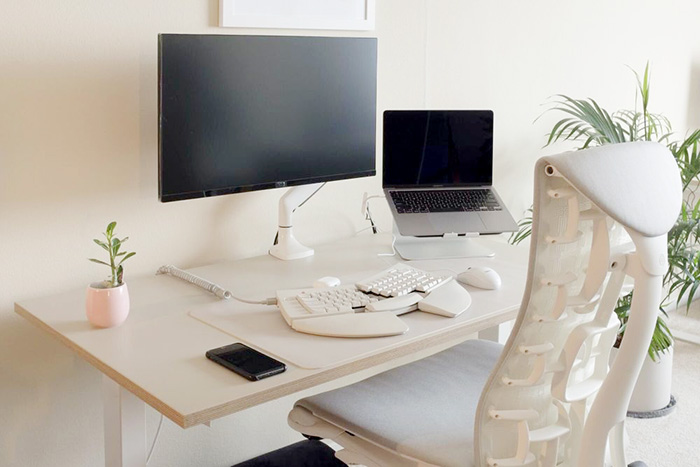A standing desk can offer several benefits for your back and overall health, but whether it is better for your back depends on how you use it and your individual circumstances. The potential advantages and considerations of using a standing desk:

Benefits of a Standing Desk for Your Back
1. Reduces Sedentary Time:
- Standing desks help reduce the amount of time spent sitting, which can decrease the risk of developing back pain associated with prolonged sitting.
2. Improves Posture:
- Standing encourages a more natural alignment of the spine compared to slouching or hunching over a desk. This can lead to better posture and less strain on the lower back.
3. Alleviates Lower Back Pain:
- For some individuals, standing rather than sitting can help alleviate pressure on the lower back and reduce pain, especially if they have conditions exacerbated by prolonged sitting.
4. Enhances Core Strength:
- Standing engages the core muscles more than sitting, which can strengthen the muscles that support your back and improve overall stability.
Considerations for Using a Standing Desk
1. Proper Ergonomics:
- Ensure the desk height is set so that your elbows are at a 90-degree angle and your computer screen is at eye level. Poor ergonomics can lead to neck and upper back strain.
2. Alternating Between Sitting and Standing:
- It’s essential to alternate between sitting and standing throughout the day. Prolonged standing can also cause discomfort and strain on the back, legs, and feet.
3. Footwear and Matting:
- Wear supportive shoes and consider using an anti-fatigue mat to reduce the strain on your lower back and legs while standing.
4. Movement and Stretching:
- Regularly move around and stretch to maintain flexibility and prevent stiffness. Standing in one position for too long can be just as harmful as prolonged sitting.
How to Use a Standing Desk Effectively
1. Start Gradually:
- If you’re new to standing desks, start by standing for short periods and gradually increase the time as your body adapts. Aim for a balance, such as standing for 30 minutes to an hour at a time.
2. Maintain Good Posture:
- Keep your shoulders relaxed, and your spine neutral. Avoid leaning on one leg or slumping forward.
3. Adjust Desk and Monitor Heights:
- The desk should be at elbow height when standing. The top of your monitor should be at or slightly below eye level to avoid neck strain.
4. Incorporate Movement:
- Use a footrest to shift your weight occasionally, take short walks, and stretch regularly to keep your muscles engaged and reduce fatigue.
When a Standing Desk Might Not Be Better
1. Pre-existing Conditions:
- Individuals with certain back conditions, such as spinal stenosis or varicose veins, may not benefit from prolonged standing and should consult with a healthcare professional.
2. Personal Comfort:
- Some people may find standing desks uncomfortable due to foot, leg, or lower back issues. In such cases, a combination of sitting and standing, or alternative ergonomic solutions, might be more effective.
Conclusion
A standing desk can be beneficial for your back by reducing sedentary time, improving posture, and engaging core muscles. However, it’s crucial to use it correctly and incorporate movement and ergonomic principles. Alternating between sitting and standing, maintaining proper desk and monitor heights, and using supportive footwear can help maximize the benefits and minimize any potential drawbacks. Always consider your individual health needs and consult a healthcare professional if you have any concerns about using a standing desk.
